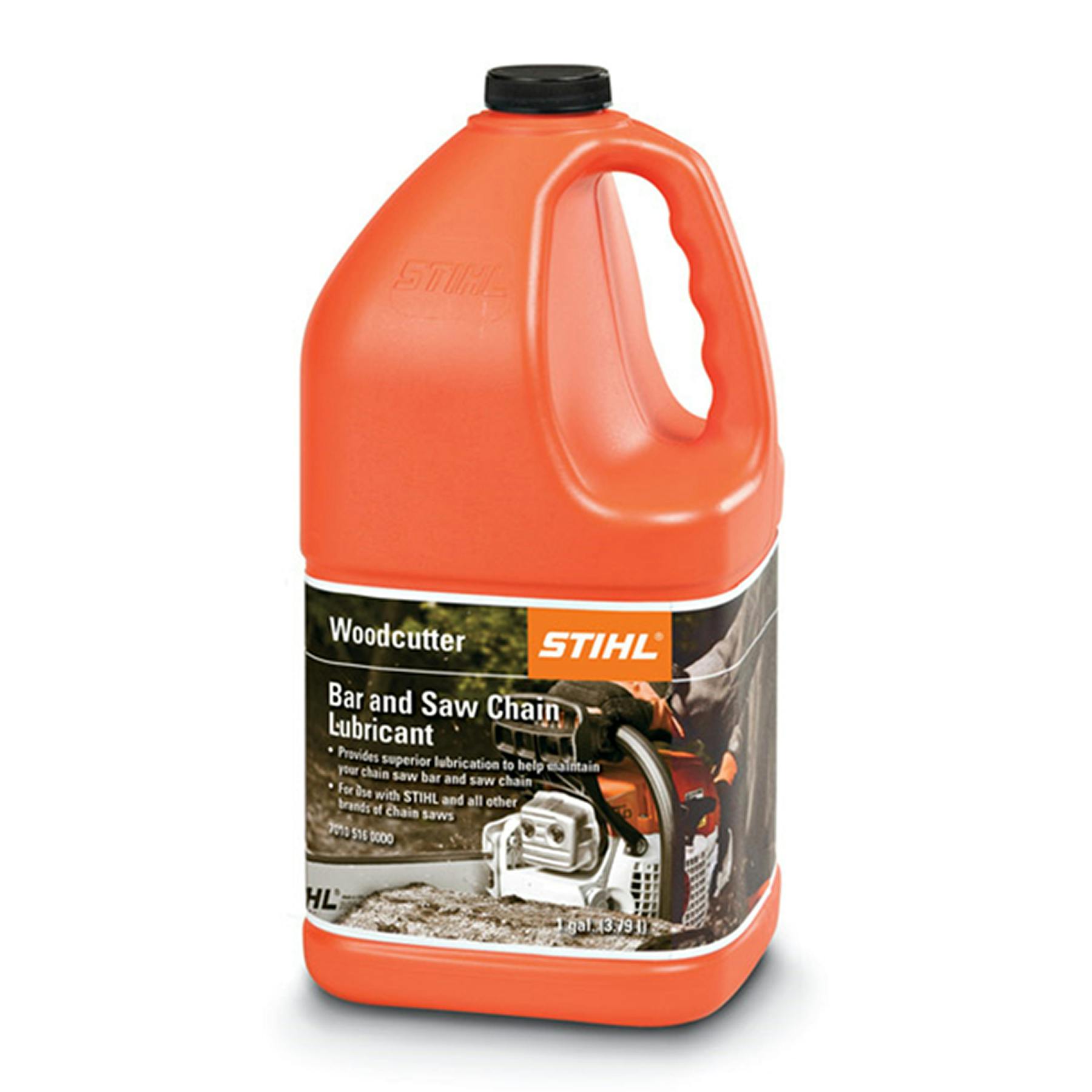Chainsaw bar oil typically falls within a specific weight range. The weight ensures proper lubrication and optimal performance.
Understanding the weight of chainsaw bar oil is crucial for maintaining your chainsaw. The right oil weight ensures smooth operation and extends the life of the chainsaw bar and chain. Many users overlook this detail, leading to potential damage and decreased efficiency.
In this blog, we will explore the importance of choosing the correct weight for chainsaw bar oil. We will also discuss how different weights can impact your chainsaw’s performance. This information will help you make informed decisions and keep your chainsaw running smoothly. Dive in to learn more about selecting the right chainsaw bar oil weight for your needs.
Importance Of Chainsaw Bar Oil
Chainsaw bar oil is crucial for the proper functioning of your chainsaw. It not only lubricates the chain but also plays a vital role in protecting the chainsaw from damage. Regular use of bar oil ensures smooth and efficient cuts, preventing wear and tear.
Protecting Your Chainsaw
Chainsaw bar oil forms a protective layer on the bar and chain. This layer reduces friction between moving parts. Without proper lubrication, the chain can overheat, leading to potential damage. The oil also helps in keeping the chain sharp for longer.
Regular use of high-quality bar oil extends the lifespan of your chainsaw. It prevents rust and corrosion, especially in wet conditions. This is essential for maintaining the tool’s performance and durability.
Enhancing Cutting Efficiency
Using chainsaw bar oil enhances cutting efficiency significantly. A well-lubricated chain moves smoothly, allowing for faster and cleaner cuts. This reduces the effort required to cut through wood.
Efficient cutting means less strain on the chainsaw’s motor. This can help in reducing fuel consumption and prolonging the life of the engine. It’s a win-win situation for both the tool and the user.
For best results, always use the recommended type of bar oil for your chainsaw. This ensures optimal performance and safety.

Credit: www.tractorsupply.com
Types Of Chainsaw Bar Oil
Chainsaw bar oil is essential for the smooth operation of your chainsaw. It reduces friction and wear on the bar and chain. There are two main types of chainsaw bar oil: Petroleum-Based Oils and Biodegradable Oils. Each type has its own set of advantages and disadvantages.
Petroleum-based Oils
Petroleum-based oils are the most common type of chainsaw bar oil. They are made from refined crude oil. These oils are known for their excellent lubrication properties. They perform well in all weather conditions.
Disadvantages:
- Not environmentally friendly
- Can be harmful to plants and animals
Biodegradable Oils
Biodegradable oils are made from natural ingredients. These oils are designed to break down quickly in the environment. They are a more eco-friendly option.
Disadvantages:
- Can be more expensive
- May not perform as well in extreme conditions
When choosing the right oil, consider your needs and the environment. Both types have their pros and cons.
Selecting The Right Bar Oil
Choosing the correct chainsaw bar oil can be tricky. The oil’s weight and type impact your chainsaw’s performance. Let’s explore the key factors to consider.
Climate Considerations
Climate affects the viscosity of bar oil. In cold weather, oil thickens. Thick oil can slow your chainsaw. Use winter-grade bar oil for cold climates. This oil has additives that keep it fluid in low temperatures.
In warm weather, oil thins. Thin oil might not protect your chainsaw. Use summer-grade bar oil if you live in a hot area. This oil is thicker and ensures proper lubrication.
Chainsaw Usage Frequency
Your chainsaw usage impacts oil choice. Frequent users need high-quality oil. This oil reduces wear and tear. Occasional users can use standard bar oil. It provides enough protection for light use.
If you use your chainsaw daily, consider synthetic bar oil. It offers better protection and lasts longer. For weekend projects, mineral-based oil works fine. It is cost-effective and provides adequate lubrication.
| Usage Frequency | Recommended Oil Type |
|---|---|
| Frequent | High-quality or synthetic bar oil |
| Occasional | Standard or mineral-based bar oil |
Remember, the right bar oil enhances performance. It extends your chainsaw’s life. Choose wisely based on climate and usage.

Credit: www.reddit.com
Chainsaw Bar Oil Properties
Understanding the properties of chainsaw bar oil is crucial for ensuring the optimal performance and longevity of your chainsaw. Chainsaw bar oil plays a vital role in reducing friction, providing lubrication, and protecting the chainsaw’s bar and chain from wear and tear. Let’s explore the key properties of chainsaw bar oil.
Viscosity
Viscosity refers to the oil’s thickness and its ability to flow. Chainsaw bar oil typically has a high viscosity. This means it is thick enough to stay on the bar and chain during operation. High viscosity ensures the oil clings to the chain, providing consistent lubrication. This prevents overheating and reduces wear.
Adhesiveness
Adhesiveness is the oil’s ability to stick to the bar and chain. Good chainsaw bar oil has excellent adhesiveness. This property helps the oil stay in place, even under high-speed conditions. It prevents the oil from being thrown off the chain. This ensures continuous lubrication and protection. Effective adhesiveness reduces friction and prolongs the life of your chainsaw.
Application Techniques
Applying chainsaw bar oil correctly is essential for the longevity and efficiency of your chainsaw. Proper techniques ensure the bar and chain are well-lubricated, reducing friction and preventing wear. Here, we discuss two main application methods: manual oiling and automatic oiling systems.
Manual Oiling
Manual oiling involves applying the oil by hand. This method requires more attention but offers greater control over the amount and placement of the oil.
- Step 1: Turn off the chainsaw and let it cool.
- Step 2: Use an oil can or bottle to apply the oil directly onto the bar and chain.
- Step 3: Rotate the chain by hand to ensure even distribution.
Manual oiling is suitable for occasional use or smaller tasks. It allows you to monitor the oil application and adjust as needed.
Automatic Oiling Systems
Automatic oiling systems are common in modern chainsaws. These systems ensure a constant supply of oil to the bar and chain, reducing the need for manual intervention.
| Feature | Benefit |
|---|---|
| Automatic Pump | Provides consistent lubrication |
| Adjustable Flow | Customizes the oil amount based on the task |
| Built-in Reservoir | Stores oil for extended use |
Using an automatic oiling system saves time and ensures the chainsaw operates smoothly. It is ideal for heavy-duty tasks or prolonged use.
Both manual and automatic oiling techniques have their advantages. Choosing the right method depends on the task and your chainsaw’s features. Proper application of chainsaw bar oil can significantly enhance your chainsaw’s performance and lifespan.
Maintenance Tips
Maintaining your chainsaw is crucial for its longevity and performance. Proper care ensures the chainsaw runs smoothly and safely. One important aspect is the weight of the chainsaw bar oil. Here are some essential maintenance tips to keep your chainsaw in top shape.
Regular Oil Checks
Checking the oil level regularly is vital. Low oil levels can cause the chainsaw to overheat. This can damage the bar and chain. Always ensure the oil reservoir is filled. Use the right type of oil for your chainsaw model. Refer to the manufacturer’s guide for recommendations.
Cleaning The Bar And Chain
Clean the bar and chain after each use. Debris and sawdust can accumulate quickly. This can affect the chainsaw’s performance. Use a soft brush to remove any build-up. Wipe the bar and chain with a clean cloth. Avoid using harsh chemicals as they can damage the parts.
Common Mistakes
Using the right chainsaw bar oil is crucial for the longevity and performance of your chainsaw. Many users make common mistakes that can harm their equipment. Below are some frequent errors and how to avoid them.
Using Incorrect Oil
One common mistake is using the wrong type of oil. Not all oils are created equal. Chainsaw bar oil has specific properties that other oils lack. Using motor oil or other lubricants can lead to poor performance. The chainsaw may overheat or suffer damage. Always check your user manual for the recommended oil type.
Neglecting Oil Levels
Another frequent error is not monitoring oil levels. Chainsaws need consistent lubrication. Low oil levels can cause the chain to wear out quickly. It can also lead to overheating. Make it a habit to check the oil level before starting your chainsaw. Topping off the oil only takes a few seconds but can save you from costly repairs.
Keep a spare bottle of bar oil handy. This ensures you never run out during a job.
| Common Mistakes | Consequences | Solutions |
|---|---|---|
| Using Incorrect Oil | Poor performance, overheating | Use recommended oil |
| Neglecting Oil Levels | Chain wear, overheating | Check oil levels regularly |
Environmental Impact
Chainsaw bar oil is essential for smooth operation. It lubricates the chainsaw bar and chain, ensuring efficient cutting. But, its use raises environmental concerns. Understanding its impact is crucial for eco-friendly practices.
Eco-friendly Options
There are eco-friendly chainsaw bar oils available. They are biodegradable and made from renewable resources. These oils minimize harm to the environment. Look for oils labeled as “biodegradable” or “eco-friendly”. They break down quickly and do not pollute soil or water.
- Plant-based oils: Derived from natural sources like vegetable oils.
- Low-toxicity formulas: Contain fewer harmful chemicals.
- Recycled oils: Processed from used oil, reducing waste.
Proper Disposal Methods
Disposing of chainsaw bar oil properly is vital. Improper disposal can lead to soil and water contamination. Follow these steps to dispose of used oil safely:
- Collect used oil: Store it in a sealed container.
- Find a disposal facility: Locate a nearby recycling center or hazardous waste facility.
- Transport safely: Take the oil to the facility, ensuring no spills.
Some places offer oil recycling programs. Check with local authorities or waste management services. Never pour used oil down the drain or on the ground. This prevents environmental damage and keeps ecosystems healthy.

Credit: www.stihlusa.com
Frequently Asked Questions
What Weight Is Chainsaw Bar Oil?
Chainsaw bar oil is typically SAE 30 weight. This means it has a viscosity rating of 30, which is suitable for various chainsaw models.
Is Chainsaw Bar Oil Different From Motor Oil?
Yes, chainsaw bar oil is different from motor oil. Bar oil is specifically formulated to adhere to the chain and bar, reducing friction and wear.
Can I Use Other Oils For Chainsaw Bar?
It’s not recommended to use other oils for chainsaw bars. Bar oil is designed to stay on the chain and bar, providing better lubrication.
Why Is Chainsaw Bar Oil Important?
Chainsaw bar oil is important because it reduces friction, minimizes wear, and extends the lifespan of the chainsaw’s components.
Conclusion
Choosing the right weight for chainsaw bar oil is important. It keeps your chainsaw running smoothly. Remember, different seasons need different oil weights. In colder months, use lighter oil. For warmer months, heavier oil works best. Always check your chainsaw manual for recommendations.
Proper oil weight ensures longer chainsaw life. Maintain your chainsaw regularly for top performance. Happy cutting!
